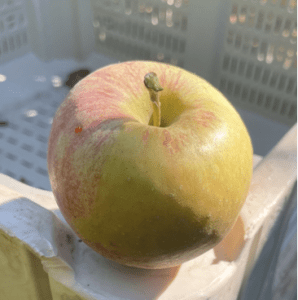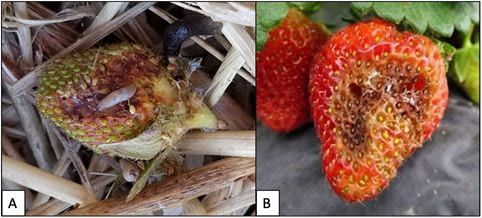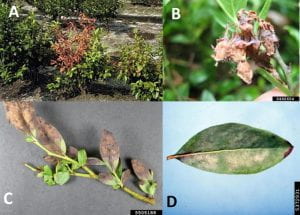Russet on Apples: Current Understanding and Management
By John Skae, Candidate for B.S. in Physiology and Neurobiology, and Macarena Farcuh, Ph.D. Assistant Professor and Extension Specialist, UMD
What is russet on apples?
Russet on apples is a disorder of the skin that results in discoloration and changes to the expected smooth texture of the skin of apples. Russet appears as a spectrum from mild brown weblike patterns to severe rough changes on the surface of apples and many variations in between (Fig. 1). Russeting is only skin deep and thus will not affect the flesh of the fruit. It can occur due to naturally-occurring weather conditions, particularly humid and wet weather.

Russeting can ultimately reduce the market value of apples, decreasing grower profitability. According to the US Department of Agriculture, the presence of russet disqualifies apples from the US Extra Fancy, US Fancy grades if smooth, solid russeting is more than 10%, while excessive russeting or smooth net-like russeting exceeding 25% excludes fruit from the US No. 1 grade categories.
Apples can begin to russet within the first 30-40 days of development, starting at petal fall. The earlier the tissues are damaged, the more dramatic the damage will be. But it is important to mention that russet can also be developed later during the growing season. Russeting occurs because cracks begin to develop underneath the cuticle of the apple. The damage in the epidermal cells underneath the cuticle turns brown. The cells are then pushed upwards towards the skin because new cork cells are growing underneath the affected epidermal cells. Once the damaged cells reach the surface of the apple, they form phellogen, a wound-sealing tissue created as a result of the russeting reaching the surface. Although russeting affects the cosmetic appearance of apples, it does not harm fruit flesh taste.
What factors cause or contribute to apple russeting?
Some cultivars produced by selective breeding are more prone to russeting than others as these can alter the genetic makeup of the apple to express russet. For example, Golden Delicious apples are highly susceptible to russet, while Red Delicious apples rarely express the russeting disorder.
Continue reading Russet on Apples: Current Understanding and Management




